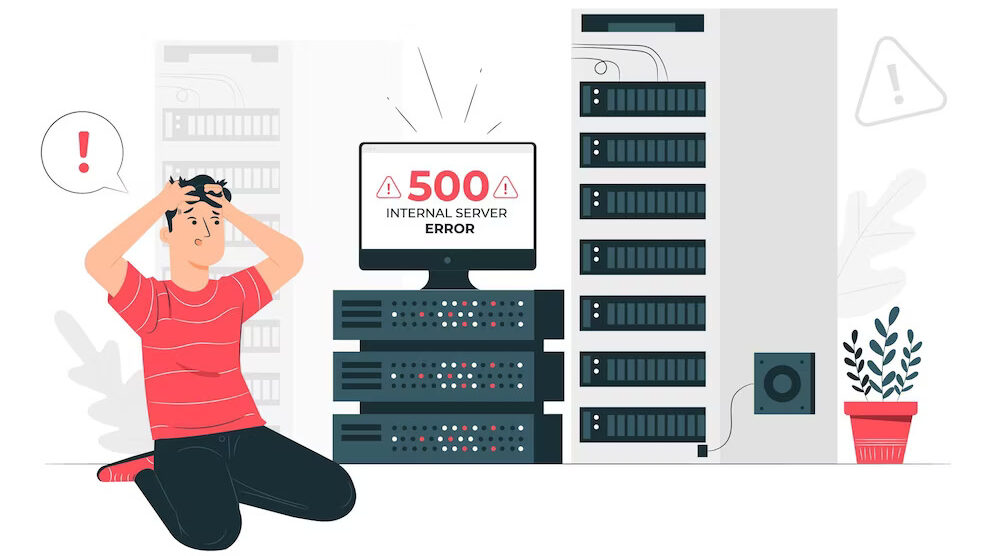Comprehensive Network Diagnostics for Server Crashes
- 1 Network Diagnostics for Server Crashes
- 1.1 Understanding Server Crashes
- 1.2 Importance of Network Diagnostics
- 1.3 Network Diagnostics Tools
- 1.4 Identifying Common Network Issues
- 1.5 Analyzing Server Health
- 1.6 Real-time Monitoring
- 1.7 Preventive Measures
- 1.8 Collaborative Diagnostics
- 1.9 Investigating Security Breaches
- 1.10 Cloud-Based Diagnostics
- 1.11 Seeking Professional Assistance
- 1.12 Steps to Take During a Server Crash
- 1.13 Lessons from the events
- 2 Conclusion
Today, in a world of digital technology in which businesses rely heavily on the internet to run their business operations, server malfunctions could result in negative consequences. They could result in interruptions in operations, loss of revenue, and harm to the reputation of a business. Thus, having a thorough system for diagnosing network problems is vital to recognize and fix server problems quickly. In this post, we’ll explore the field of diagnostics for networks, examining different tools, methods, and the best methods to reduce the effects of server crashes. Here Is the server crash detail about windstream outages map
Network Diagnostics for Server Crashes
A server crash can cause an entire company to a halt. Imagine an event where the website of an online retailer crashes in an e-commerce season that is in high demand. The financial implications as well as loss of trust among customers could be catastrophic. This guide will take you through complete network diagnostics. It will also provide tips on how you can effectively combat server failures and the fundamental reasons.
Understanding Server Crashes
The cause of server crashes is when the server is hit by abrupt failures, making its users unable to access it. They can be caused by malfunctioning hardware, software issues or other external triggers like cyberattacks. Finding out the cause of server failures is the primary step in developing a reliable system for network diagnostics.
Importance of Network Diagnostics
Network diagnostics is the procedure of identifying and locating and solving issues that arise within an infrastructure of networks. It is a crucial element to ensure the uninterrupted running of servers as well as the applications that they host. In the process of monitoring and diagnosing the health of their networks, companies can reduce the risk of server failures.
Network Diagnostics Tools
- Ping, Traceroute The tools are designed to determine the latency of networks and track the route packets travel across networks.
- Network Monitoring Software This software provides instantaneous insights into the performance of networks that allow earlier detection of abnormalities.
- Packet Analyzers Packet sniffers collect and analyze data packets helping to diagnose network problems.
Identifying Common Network Issues
- Bandwidth Issues Unsuffering bandwidth may result in slow performance as well as crashes. Monitoring bandwidth usage is essential.
- DNS Problems DNS Name System problems can cause servers to be inaccessible. Check regularly for errors in DNS configurations.
- The Firewall configuration The incorrect firewall settings can block legitimate web communication, which could cause delays in services.
Analyzing Server Health
- CPU Use The high use of CPU could indicate exhaustion of resources. Monitoring the CPU’s metrics can help prevent the possibility of crashes.
- Memory Use Memory usage that is not sufficient can cause application malfunctions. Be aware of the amount of memory consumed.
- Measurements of Disk I/O The monitoring of disk read and write speeds is essential to avoid bottlenecks in performance.
Real-time Monitoring
Monitoring in real-time ensures the rapid detection of network issues. This ensures quick response and lessens the impact crash.
Preventive Measures
- Periodic Software Updates Make sure that operating systems and software are up-to-date in order to repair bugs and vulnerabilities.
- redundancy and failover System Install redundant servers as well as failover systems for continuity in case of crashes.
- load balancing The idea is to spread the network’s traffic equally to avoid over-load on particular servers.
Collaborative Diagnostics
Collaboration between IT departments is crucial for the efficient diagnosis of network issues. Sharing perspectives and insights will lead to faster problem resolution.
Investigating Security Breaches
- DDoS attacks: Distributed Denial of Service attacks may cause chaos to servers. Be prepared for such attacks by taking strong security methods.
- Malware infected The malicious software may result in crashes. In the long run, regular scanning and intrusion detection tools are crucial.
Cloud-Based Diagnostics
Cloud-based solutions provide networking diagnostic tools that are able to manage large and complicated infrastructures.
Seeking Professional Assistance
When the situation is complex getting help expert network diagnostics specialists will provide more insight on the issues and possible solutions.
Steps to Take During a Server Crash
- To isolate the issue Determine whether the problem is confined to a particular server or affects all of the network.
- Inform stakeholders Be sure to keep stakeholders updated of the current situation, anticipated time to restore, as well as the progress of recovery.
- Implement a Recovery Plan Use a clearly-defined recovery plan in order to restore the services as quickly as possible.
Lessons from the events
Each server failure provides an opportunity to study and grow. Perform post-incident analysis to avoid the possibility of future incidents.
Conclusion
A thorough network diagnostic is the core of an efficient IT infrastructure. By understanding the causes of server failures and implementing efficient diagnostic tools and encouraging collaboration within IT teams, organizations are able to overcome the difficulties posed by server malfunctions. Keep in mind that proactive actions as well as continuous education can be the key to reducing the amount of downtime, and ensuring smooth operation.

















